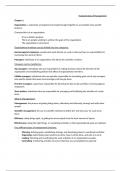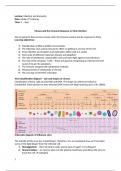Summary
Summary Fundamentals Of Management Tenth Edition MCB12806
- Course
- Institution
Summary of the book Fundamentals of Management by Stephen P. Robbins, Mary Coulter and David A. DeCenzo. Tenth edition. In English. Global Edition. Chapters 1, 2, 3, 4 and 5
[Show more]












